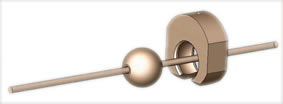The present project will contribute to more sustainable fisheries by developing environmental friendly fishing technology. Longline is considered to be one of the most environmentally friendly and quality preserving catch methods available on an industrial scale today. Longline caught fish is usually alive and faultless when it enters the vessel and the gear has practically no negative effect on the seabed. In addition, the carbon emissions from each fish kg harvested with this technique are only 25-75 % compared to bottom trawling.
R&D Goals
Through a scientific approach, address the bottlenecks and technological challenges that need to be solved in order to construct a safe and user friendly technological platform. This will fulfill the demands for optimal baiting and full flexibility regarding choice of materials in the gear. This will be achieved through the following secondary objectives:
- Achieve better knowledge of fish behaviour against hooks baited with various kinds of bait and baiting techniques by video surveillance at the seabed.
- Develop a system for high-speed single bait treatment based on earlier research and methodologies from the fish processing industry.
- Develop a drum based longline system adapted to the harsh conditions at the sea.
- Make an EHS (environment, health and safety)-related evaluation around longlining and identify to what extent and how would EHS be improved with the new technology.
- Develop optimal consumables such as line and hook features suited the new technology.
- Carry out an investigation around natural and fabricated baits today: are the sustainable harvested and will remain on the market, or will we shortly see a change towards fabricated bait?
